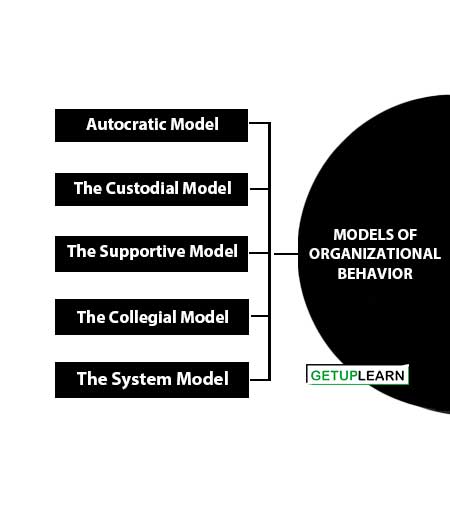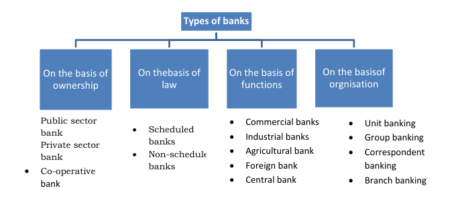Table of Contents
Models of Organizational Behavior
These are the models of organizational behavior:

Autocratic Model
The autocratic model depends on power. Those who are in command must have the power to demand. “You do this or else,” meaning that an employee who does not follow orders will be penalized. In an autocratic environment, the managerial orientation is formal, official authority.
This authority is delegated by right of command over the people to it applies. Under an autocratic environment, the employee is obedient to a boss, not respect to a manager. The psychological result for employees is dependence on their boss, whose power to hire, fire, and “perspire” them is almost absolute.
The boss pays minimum wages because minimum performance is given by employees. They are willing to give minimum performance sometimes reluctantly because they must satisfy survival needs for themselves and their families.
Some employees give higher performance because of internal achievement drives, because they personally like their boss, because the boss is “a natural-born leader,” or because of some other factor; but most of them give only minimum performance.
The Custodial Model
Workers being managed under the autocratic model often feel insecurity and frustration. They may even show aggression towards their boss and their families and neighbors. That is why progressive managers felt that there must be some way to develop better employee relationships so that insecurity and frustration could be dispelled.
A successful custodial approach depends on economic resources. The resulting managerial orientation is toward money to pay wages and benefits. Since employees’ physical needs are already reasonably met, the employer looks to security needs as a motivating force.
If an organization does not have the wealth to provide pensions and pay other benefits, it cannot follow a custodial approach. The custodial approach leads to employee dependence on the organization.
Rather than being dependent on their boss for their weekly bread, employees now depend on organizations for their security and welfare. Employees working in a custodial environment become psychologically preoccupied with their economic rewards and benefits.
The Supportive Model
The supportive model depends on leadership instead of power or money. Through leadership, management provides a climate to help employees grow and accomplish in the interests of the organization the things of which they are capable. The basic idea behind this theory is that leadership motivates people to work and not the power of money as in the custodian model.
The leader assumes that workers are not by nature passive and resistant to organizational needs, but that they are made so by an inadequately supportive climate at work. They will take responsibility, develop a drive to contribute, and improve themselves if management gives them a chance.
Management orientation, therefore, is to support the employee’s job performance rather than simply support employee benefit payments as in the custodial approach. Since management supports employees in their work, the psychological result is a feeling of participation and task involvement in the organization.
Employees may say “we” instead of “they” when referring to their organization. Employees are more strongly motivated than by earlier models because of their status and recognition needs are better met. Thus they have awakened drives for work.
The Collegial Model
A useful extension of the supportive model is the collegial model. The term “collegial” relates to a body of people working together cooperatively. The collegial model depends on management’s building a feeling of partnership with employees. The result is that employees feel needed and useful. They feel that managers are contributing also, so it is easy to accept and respect their roles in their organization.
Managers are seen as joint contributors rather than as bosses. The managerial orientation is toward teamwork. Management is the coach that builds a better team. The employee’s response to this situation is responsibility.
For example, employees produce quality work not because management tells them to do so or because the inspector will catch them if they do not, but because they feel inside themselves an obligation to provide others with high quality. They also feel an obligation to uphold quality standards that will bring credit to their jobs and company.
The psychological result of the collegial approach for the employee is self- discipline. Feeling responsible, employees discipline themselves for performance on the team in the same way that the members of a football team discipline themselves to training standards and the rules of the game.
In this kind of environment employees normally feel some degree of fulfillment, worthwhile contribution, and self-actualization, even though the amount may be modest in some situations. This self-actualization will lead to moderate enthusiasm in performance.
The System Model
An emerging model of organizational behavior is the system model. It is the result of a strong search for higher meaning at work by many of today’s employees; they want more than just a paycheck and job security from their jobs.
Since they are being asked to spend many hours of their day at work, they want a work context that is ethical, infused with integrity and trust, and provides an opportunity to experience a growing sense of community among coworkers.
To accomplish this, managers must increasingly demonstrate a sense of caring and compassion, being sensitive to the needs of a diverse workforce with rapidly changing needs and complex personal and family needs. In response, many employees embrace the goal of organizational effectiveness and reorganize the mutuality of company-employee obligations from a system viewpoint.
They experience a sense of psychological ownership of the organization and its products and services. They go beyond the self-discipline of the collegial approach until they reach a state of self-motivation, in which they take responsibility for their own goals and actions.
As a result, the employee needs that are met are wide-ranging but often include the highest-order needs (e.g., social, status, esteem, autonomy, and self-actualization).
Because it provides employees an opportunity to meet these needs through their work as well as understand the organization’s perspectives, this new model can engender employees’ passion and commitment to organizational goals. They are inspired; they feel important; they believe in the usefulness and viability of their system for the common good.
FAQs Section
What are the models of organizational behavior?
Autocratic Model, Custodial Model, Supportive Model, Collegial Model, and System Model are 5 major models of organizational behavior.


